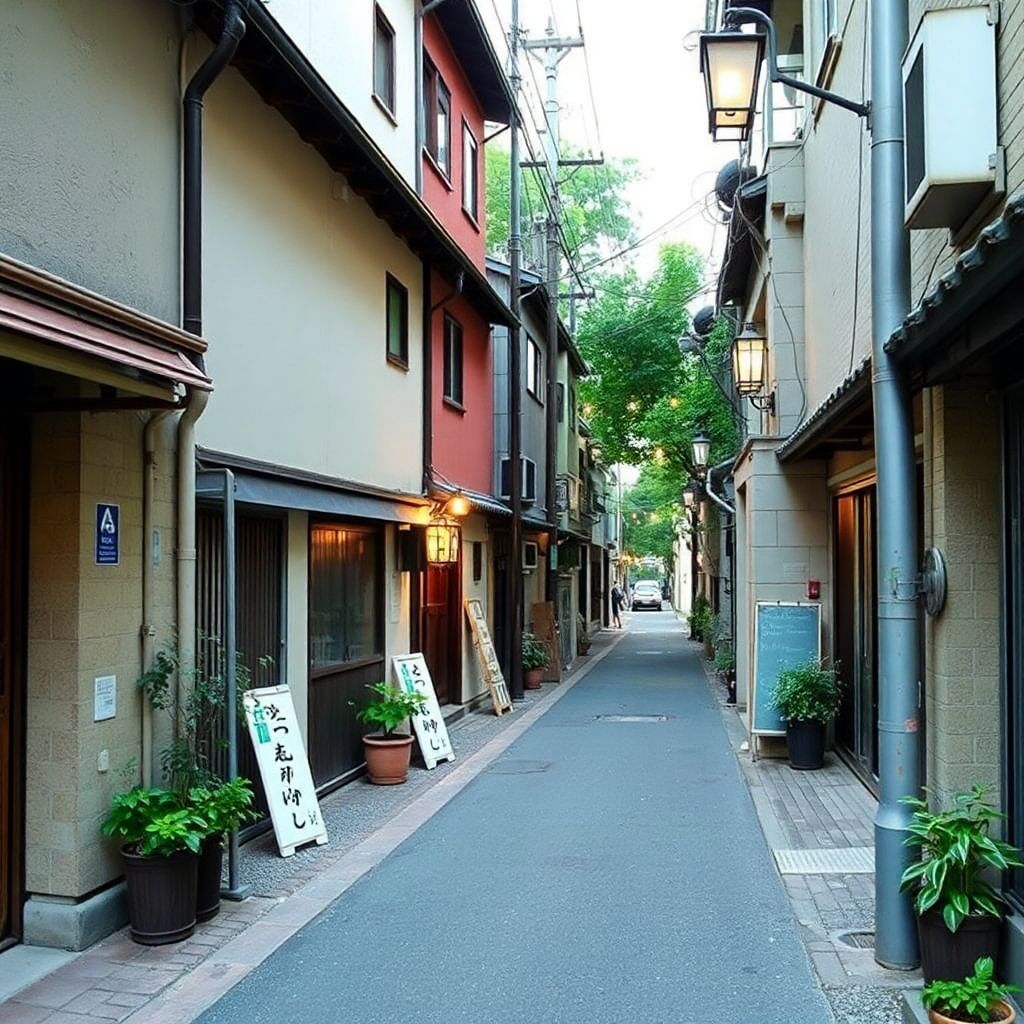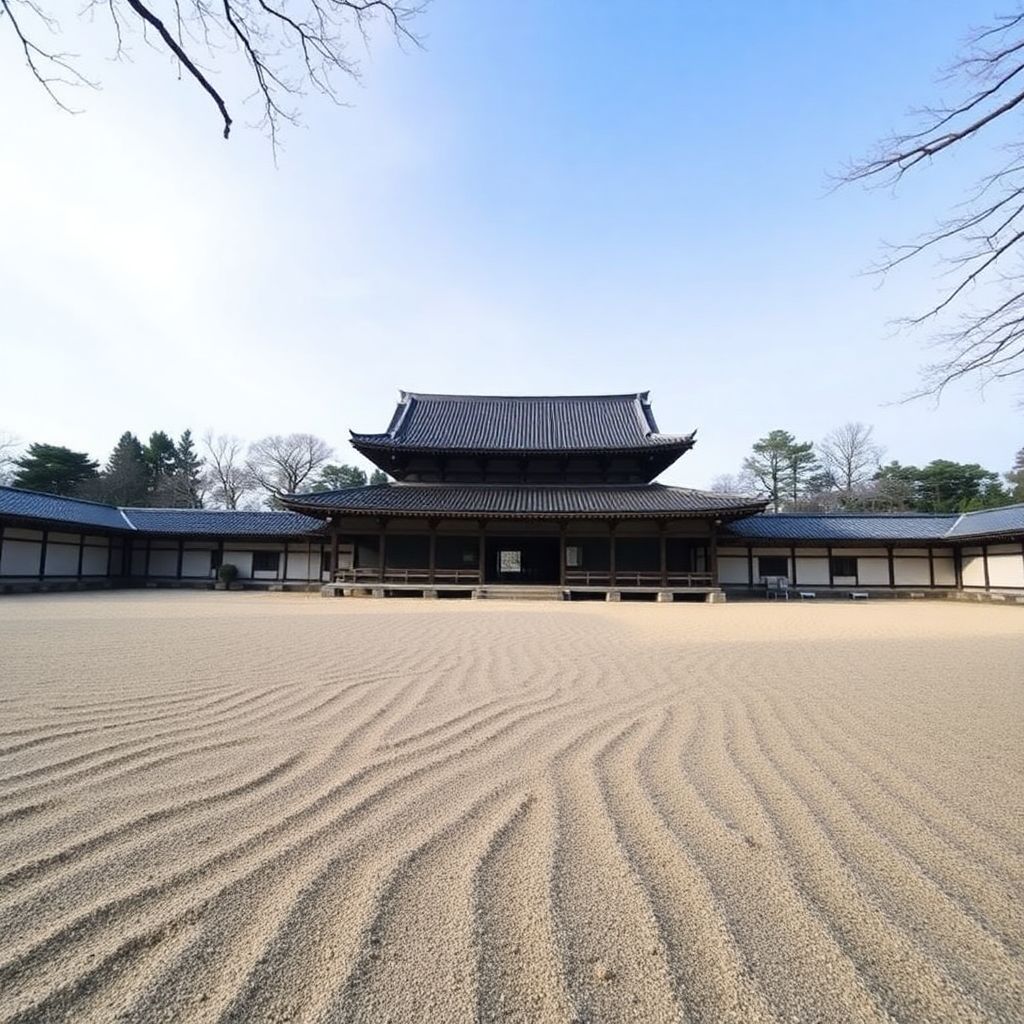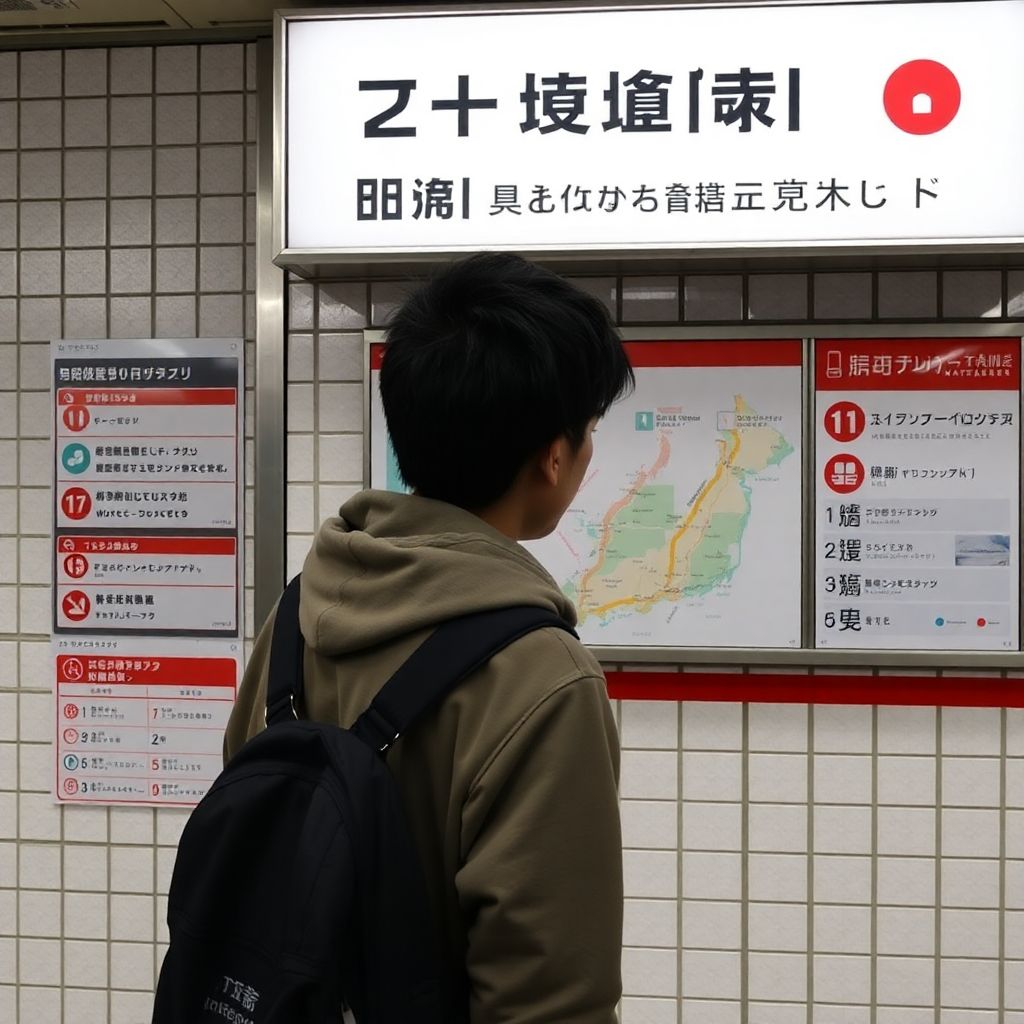
Japan, The name itself conjures images of dazzling neon cityscapes, hyper-efficient bullet trains, and cutting-edge technology seamlessly woven into daily life. It’s a country that often feels futuristic, where convenience is king and connectivity is constant. For travelers, this translates into powerful navigation apps, instant translation tools, ubiquitous Wi-Fi, and endless online recommendations. Yet, amidst this technological marvel, have you ever felt… overwhelmed? Rushing from point A to B, glued to a screen, potentially missing the subtle beauty and profound cultural nuances that lie just beyond the digital interface?
Imagine navigating Tokyo’s vibrant chaos not with a blinking blue dot, but with keen observation and a well-marked map. Picture riding the Shinkansen, gazing out at the fleeting landscapes instead of scrolling through feeds. Envision finding tranquility in a Kyoto temple garden, your attention fully present, undisturbed by notifications. This guide explores Offline Travel in Japan: A Mindful Tokyo to Kyoto Journey, offering a pathway to experience this iconic route with less technological reliance and more conscious presence. Discover how embracing an analog approach in this high-tech nation can paradoxically lead to a deeper, calmer, and more authentic connection with its unique culture and soul.
Finding Zen in the Analog: Benefits of Unplugging in Japan

Choosing to offline escape, or at least tech-minimally, in a country as wired as Japan might seem counterintuitive, even daunting. Yet, the rewards for doing so are surprisingly profound, aligning beautifully with the mindful undercurrents present in Japanese culture itself. Disconnecting from the constant digital stream allows you to connect more deeply with the intricate tapestry of Japan.
Firstly, it fosters heightened observation and appreciation for detail. Japanese culture is rich with subtle aesthetics – the careful arrangement in a bento box, the precise fold of an origami crane, the nuanced etiquette in a simple transaction. Without apps dictating every step, you naturally become more observant. You start noticing the elegant design of signage, the efficiency of train platform markings, the seasonal flowers adorning a small shrine. You learn to read the environment, appreciating the layers of thought and care often missed when relying solely on digital guidance.
Secondly, traveling unplugged cultivates patience and resilience. Navigating complex train stations or deciphering menus without instant translation requires effort, sometimes leading to minor confusion or delays. Embracing this process, rather than fighting it with tech, builds resourcefulness. It encourages you to engage your problem-solving skills, to pause, breathe, and perhaps ask for help, fostering humility and adaptability. This slower, more deliberate pace mirrors the mindful concept of gaman – enduring difficulties with dignity.
Thirdly, and perhaps most importantly, it opens doors to more authentic human interaction. Relying less on apps encourages you to interact directly with people – station attendants, shopkeepers, fellow travelers. While language barriers exist, a polite demeanor, gestures, and a simple phrasebook go a long way. These small, genuine encounters, born from necessity, often become the most cherished travel memories, offering glimpses into the local culture far richer than any online review. It’s about experiencing Japan through its people, not just its pixels. Is the efficiency of an app truly more valuable than the warmth of a shared, slightly awkward, human moment?
Mindful Meanderings in Metropolis: Experiencing Tokyo Offline

Tokyo, a sprawling, electrifying metropolis, might seem like the ultimate test for offline travel. Yet, beneath its high-tech surface lies a city of quiet neighborhoods, serene gardens, and deeply ingrained traditions perfectly suited for mindful exploration without constant digital aid.
Navigating Tokyo’s Calm Corners
Instead of chasing trending spots dictated by algorithms, use a good physical map (available at tourist centers or stations) to explore areas known for their traditional charm or tranquility. Consider Yanaka, with its old temples, traditional shops, and slower pace, often called “Shitamachi” (old downtown). Wander through Meiji Jingu, an oasis of calm surrounding a shrine dedicated to Emperor Meiji and Empress Shoken; leave the phone packed away and simply walk beneath the towering trees, listening to the crunch of gravel underfoot. Explore the backstreets of Kagurazaka, with its geisha district history and French influences, letting curiosity guide you down narrow lanes. Focus on absorbing the atmosphere – the sounds, smells, the architectural details – rather than ticking off landmarks.
Sensory Exploration Sans Screen
Engage your senses fully. Visit Tsukiji Outer Market (after the main wholesale market moved) not just to eat, but to observe the energy, the variety of seafood, the calls of the vendors. Find a quiet bench in Shinjuku Gyoen National Garden and simply sit, noticing the different garden styles (English Landscape, French Formal, Japanese Traditional) and the changing light. Ride the Yamanote Line (the main loop line) with a physical map, observing the distinct character of each neighborhood as you pass through or hop off spontaneously. Try navigating the subway using the extensive station maps and signage – it’s a marvel of design once you start paying attention. Allow yourself to get slightly lost; sometimes the best discoveries are accidental.
The Shinkansen Silence: A Mindful Bullet Train Journey

The journey from Tokyo to Kyoto via the Shinkansen (bullet train) is an experience in itself – a testament to Japanese engineering and punctuality. Traveling this route offline transforms it from mere transportation into a mindful interlude.
Preparation is Key: Purchase your tickets (or activate your Japan Rail Pass, if using) in advance at a major station’s ticket office (“Midori no Madoguchi”). Study the departure boards – they clearly list track numbers, train names (like Hikari or Kodama – Nozomi is often not covered by the JR Pass), departure times, and destinations in English. Rely on these physical signs, learning to decipher the system. Find your platform and designated car number well ahead of time, observing the orderly queuing process.
Embrace the Journey: Once aboard, resist the urge to connect to onboard Wi-Fi (if available). Instead, gaze out the window. Watch the dense cityscape of Tokyo gradually give way to suburbs, then rice paddies, tea fields, traditional houses, and eventually, glimpses of mountains (on a clear day, keep an eye out for Mount Fuji between Tokyo and Nagoya/Kyoto on the right side when traveling from Tokyo). Notice the incredible smoothness and speed. Observe fellow passengers – the quiet reading, the neatly arranged bento boxes.
Mindful Moments: Use the journey time for quiet reflection. Read a physical book. Write in your travel journal. Sketch the passing scenery. Practice simply being present with the rhythm of the train and the unfolding landscape. Appreciate the efficiency not just as convenience, but as a form of national artistry. This forced pause between the intensity of Tokyo and the cultural richness of Kyoto is a perfect opportunity for mental reset.
Kyoto’s Quietude: Immersing Yourself Mindfully & Offline

Kyoto, the former imperial capital, is Japan’s cultural heart, brimming with temples, shrines, gardens, and traditional arts. Its inherent beauty lends itself perfectly to mindful, unplugged exploration.
Temple Contemplation Unplugged
Kyoto boasts thousands of temples and shrines. Instead of rushing to see them all based on online lists, choose a few that resonate with you and visit them slowly. Obtain a good city map showing major sites. At Kiyomizu-dera, known for its wooden stage, find a quieter corner away from the main crowds and simply absorb the view or the intricate details of the architecture. In Fushimi Inari Shrine, famous for its thousands of red torii gates, walk partway up the mountain path, focusing on the play of light and shadow through the gates, rather than just capturing the iconic shot. Visit early in the morning to avoid the largest crowds and experience a more serene atmosphere. Turn off your phone entirely before entering temple grounds as a sign of respect and an aid to presence.
Garden Gazing with Presence
Kyoto’s gardens are masterpieces of landscape design, intended for contemplation. Visit Ryoan-ji Temple, famous for its enigmatic Zen rock garden. Don’t try to ‘understand’ it; simply sit on the viewing platform, breathe, and let your gaze rest on the carefully arranged stones and raked sand. What feelings arise? At the Golden Pavilion (Kinkaku-ji), after admiring the stunning gold leaf structure reflected in the pond, take time to wander the surrounding garden paths, noticing the moss, the streams, the borrowed scenery. In Arashiyama’s Bamboo Grove, arrive at dawn if possible, when the towering stalks filter the first light and the only sound might be the rustling leaves – leave the camera down for a while and just feel the unique atmosphere. True appreciation comes from quiet observation, letting the garden’s intended tranquility wash over you.
Navigating Nippon Analog Style: Practical Offline Logistics

Traveling offline in Japan requires preparation and embracing analog tools. It’s entirely feasible thanks to Japan’s excellent infrastructure and signage.
Essential Analog Toolkit:
- High-Quality Physical Maps: Get detailed city maps for Tokyo and Kyoto, and a good overview map of Japan showing train lines. Tourist Information Centers (often in major stations) are excellent resources. Mark your hotel location clearly.
- Japan Rail Pass / IC Card: If using a JR Pass, learn how to use it at ticket gates or show it to station staff. For local transport (subways, buses), get a pre-paid IC card (Suica or Pasmo in Tokyo, ICOCA in Kyoto/Kansai – mostly interchangeable now). Load it with cash at station machines. Using these physically eliminates the need for app-based tickets.
- Pocket Phrasebook & Notebook: Carry a good Japanese phrasebook covering travel essentials (greetings, numbers, asking directions, ordering food). Use a notebook to write down hotel names/addresses in Japanese, key phrases, or have locals write directions.
- Printed Confirmations: Keep printed copies of hotel bookings, flight details, and any pre-booked tours.
- Cash: While cards are increasingly accepted, Japan remains a cash-friendly society, especially at smaller shops, temples, and some restaurants. Carry sufficient Yen.
Navigation Strategies:
- Master Station Signage: Japanese train and subway stations have excellent English signage. Look for line colours, station numbers, platform information, and exit numbers/landmarks. Take your time to orient yourself using station maps.
- Use Tourist Information Centers: Staff usually speak English and can provide maps, directions, transport advice, and brochures.
- Ask for Help: Don’t hesitate to politely ask station staff (“Sumimasen” – Excuse me) or even locals for directions. Show your map or written destination. People are generally helpful. Gestures work wonders.
- Landmark Navigation: In cities, use major landmarks visible on your map (towers, parks, department stores) to orient yourself while walking.
- Pre-Planning: Roughly plan your days, noting key stations or bus routes needed, but allow for flexibility.
Connecting Authentically: Language, Etiquette & Human Interaction
Traveling offline inherently pushes you towards more human interaction, which in Japan, is guided by well-established etiquette. Embracing this is key to authentic connection.
Language Efforts: Learning even a few basic Japanese phrases shows respect and effort. Key ones include:
- Sumimasen (Excuse me / Sorry)
- Arigatou gozaimasu (Thank you – polite)
- Ohayou gozaimasu (Good morning)
- Konnichiwa (Hello / Good afternoon)
- Hai (Yes) / Iie (No)
- Wakarimasen (I don’t understand)
- Eigo o hanasemasu ka? (Do you speak English?) Use your phrasebook! Pointing politely at menu items or your map destination is also effective.
Mindful Etiquette: Observe and emulate local customs.
- Bowing: A slight bow is common for greetings, thanks, or apologies.
- Quiet Voices: Maintain a low voice on public transport and in quiet places like temples. Avoid loud phone calls (if you must take one, step aside).
- Shoes: Remove shoes when entering homes, traditional inns (ryokan), temples, and some restaurants (look for shoe racks).
- Money: Use the small tray provided when paying; don’t hand cash directly.
- Eating: Slurping noodles is acceptable; sticking chopsticks upright in rice is taboo (resembles funeral rites). Being mindful of etiquette smooths interactions and deepens your cultural understanding, something easily bypassed when hidden behind a translation app.
Embrace the Encounter: View needing to ask for help not as a failure, but as an opportunity. Approach people politely. A warm smile and respectful attitude often bridge the language gap. These unplanned interactions are where the true spirit of travel resides.
Common Concerns & Solutions for Offline Japan Travel

Venturing offline in Japan can feel intimidating. Here’s how to address common worries:
Concern 1: The language barrier seems insurmountable without translation apps.
- Solution: Arm yourself with a good phrasebook and practice key phrases. Use gestures, pointing, and show written notes (hotel names, destinations). Focus on clear, simple requests. Many signs have English, and staff in tourist areas often have basic English skills. Patience and politeness are your best tools.
Concern 2: Japanese train stations (like Shinjuku or Tokyo Station) are overwhelming mazes! I’ll get lost.
- Solution: Yes, they are huge! Allow extra time. Use the large station maps located frequently. Follow signs meticulously – they indicate line colors, platform numbers, and major exits/landmarks. Don’t be afraid to ask station staff (uniformed personnel) for directions – point to your destination on your map or ticket. Focus on one step at a time.
Concern 3: How will I find good places to eat without online reviews or map apps?
- Solution: Look for places with picture menus or plastic food displays (shokuhin sampuru). Observe where locals are eating. Wander down side streets (yokocho – alleys often have great small eateries). Department store basements (depachika) offer amazing food halls with diverse options. Trust your senses – if it smells good and looks appealing, give it a try! Pointing politely works wonders.
Concern 4: What if I miss my train connection due to confusion?
- Solution: Build buffer time into your itinerary, especially when changing trains. Double-check departure boards for track numbers and times. If unsure, ask station staff immediately. Japan’s train system is incredibly punctual, but if you do miss a connection (especially on local lines), there’s usually another train reasonably soon. Stay calm and consult the physical timetables or ask staff.
Concern 5: Is it disrespectful to not use technology in such a tech-savvy country?
- Solution: Not at all! While technology is prevalent, there’s also deep respect for tradition, mindfulness, and human interaction. Choosing to navigate analog-style, engage politely, and observe respectfully will likely be seen positively, if noticed at all. Your mindful presence and respectful engagement matter more than the tools you use.
Before You Go Checklist: Offline Japan: Tokyo to Kyoto Edition
Prepare for your mindful, analog journey through Japan with this checklist:
- Essential Documents: Passport, visa (if needed), flight details (printed), travel insurance info (printed).
- Transportation:
- Japan Rail Pass (if using, exchange order printed) OR sufficient funds for tickets.
- IC Card (Suica/Pasmo/ICOCA) – obtained upon arrival.
- Cash (Yen) for IC card top-ups, smaller purchases, temples.
- Navigation Tools:
- High-quality physical maps (Tokyo, Kyoto, Japan overview).
- Pocket Japanese phrasebook.
- Notebook and pen.
- Accommodation: Printed confirmations with names, addresses (in English & Japanese if possible), and map location marked.
- Communication Backups: Note down key contacts, embassy info. Inform family of your itinerary and limited connectivity plans.
- Mindset Prep: Review basic Japanese etiquette. Set intention for mindful observation and presence. Mentally prepare for potential confusion as part of the adventure.
- Basic Japanese Phrases: Practice essential greetings, thank you, excuse me, numbers.
- Comfortable Shoes: You’ll be doing a LOT of walking!
- Final Tech Check: Download offline maps (e.g., Google Maps offline) ONLY as a last-resort emergency backup. Ensure the phone is charged but plan to keep it silenced and away. Traditional watch recommended.
Discovering Japan’s Soul, Slowly
Traveling from the electric energy of Tokyo to the cultural heart of Kyoto is a classic Japanese journey. Undertaking it offline, with mindful intention, transforms it from a logistical exercise into a pilgrimage of presence. By stepping away from the constant guidance and validation of screens, you invite serendipity, deepen your observation, and engage with Japan on its own terms, appreciating its intricate systems, subtle beauty, and quiet cultural nuances with fresh eyes. Finding your way through the elegant complexity becomes part of the destination.
You’ve explored the unique benefits of unplugging in this high-tech nation, envisioned mindful explorations of Tokyo’s calm corners and Kyoto’s serene temples, prepared for the Shinkansen journey as a meditative pause, and gathered practical analog tools and strategies. Concerns about language and navigation have been met with solutions rooted in observation, preparation, and respectful human interaction. The path to a deeper, more authentic Offline Travel in Japan experience is open.
Are you ready to trade the certainty of the blue dot for the quiet thrill of discovery? To swap instant translation for the rewarding challenge of human connection? To experience the soul of Japan not through a feed, but through your own fully present senses? Pack your maps, your phrasebook, and your mindful awareness. Allow Japan’s blend of efficiency and elegance, modernity and tradition, to unfold before you, slowly, richly, and unforgettably. The most meaningful connections lie beyond the reach of Wi-Fi.



